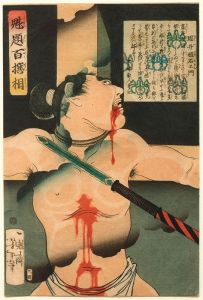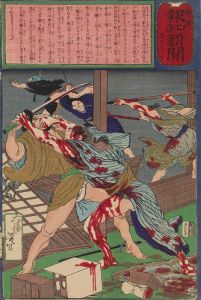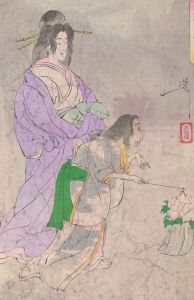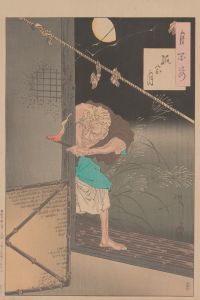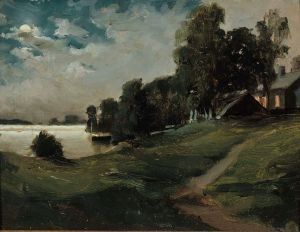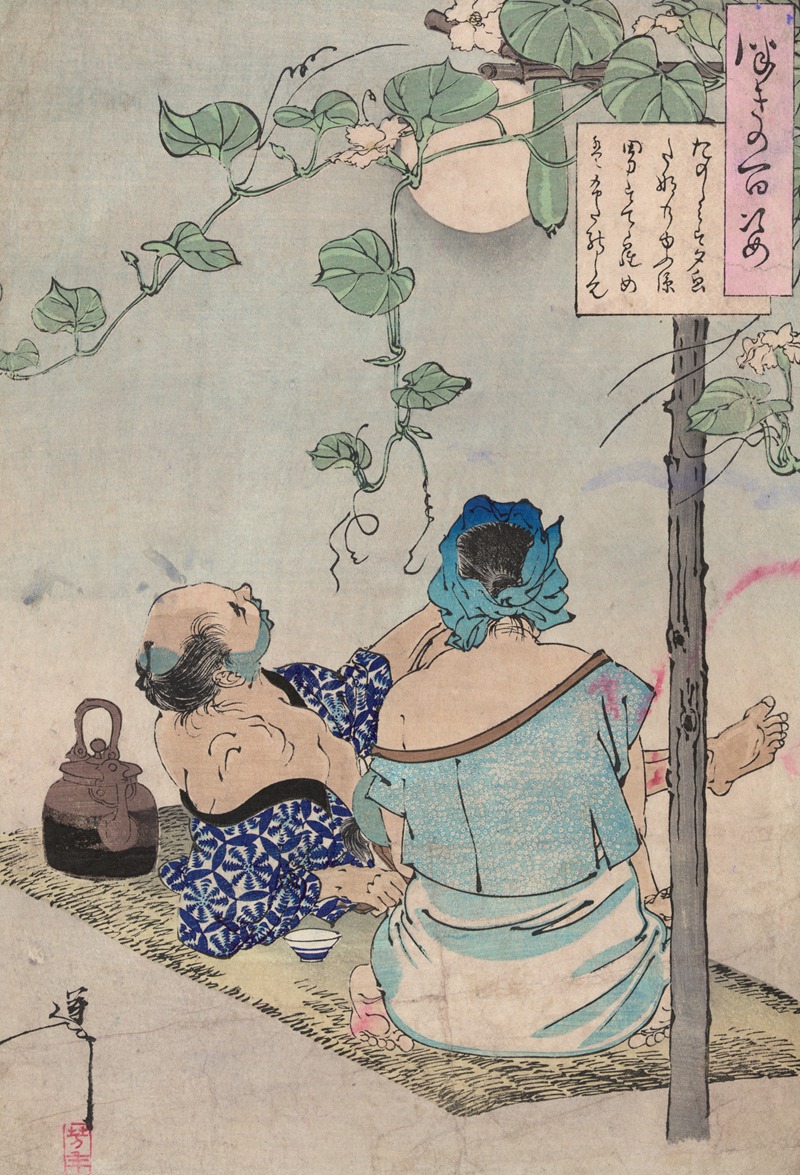
Yūgao dana nōryō zu
A hand-painted replica of Tsukioka Yoshitoshi’s masterpiece Yūgao dana nōryō zu, meticulously crafted by professional artists to capture the true essence of the original. Each piece is created with museum-quality canvas and rare mineral pigments, carefully painted by experienced artists with delicate brushstrokes and rich, layered colors to perfectly recreate the texture of the original artwork. Unlike machine-printed reproductions, this hand-painted version brings the painting to life, infused with the artist’s emotions and skill in every stroke. Whether for personal collection or home decoration, it instantly elevates the artistic atmosphere of any space.
Tsukioka Yoshitoshi was a prominent Japanese artist known for his work in ukiyo-e, a genre of woodblock prints and paintings that flourished in Japan from the 17th through 19th centuries. Among his many works, "Yūgao dana nōryō zu" is one that reflects his mastery in capturing the essence of Japanese folklore and literature through his art.
"Yūgao dana nōryō zu" translates to "Enjoying the Cool of Evening with Yūgao," and it is a part of Yoshitoshi's series that often depicted scenes from classical Japanese literature, particularly those inspired by "The Tale of Genji." This tale, written by Murasaki Shikibu in the early 11th century, is considered one of the world's first novels and a classic work of Japanese literature. The story revolves around the life and loves of Hikaru Genji, a nobleman in the Heian court.
In "The Tale of Genji," Yūgao is one of Genji's lovers, known for her beauty and tragic fate. The name "Yūgao" itself means "evening faces," referring to a type of flower that blooms in the evening, symbolizing the fleeting nature of beauty and life. Yoshitoshi's depiction of Yūgao captures this ephemeral beauty and the melancholic atmosphere associated with her story.
Yoshitoshi's work is characterized by its dynamic composition, vivid colors, and intricate details, which are evident in "Yūgao dana nōryō zu." His ability to convey emotion and narrative through visual elements is a testament to his skill as an artist. The print likely features Yūgao in a serene setting, perhaps enjoying the cool evening air, which is a common theme in Japanese art, symbolizing a moment of peace and reflection.
Yoshitoshi lived during a time of great change in Japan, as the country transitioned from the Edo period to the Meiji era. This period saw the modernization of Japan and the decline of traditional art forms like ukiyo-e. Despite these changes, Yoshitoshi remained committed to his craft, and his works are considered some of the finest examples of late ukiyo-e art. His prints often reflect a blend of traditional themes with innovative techniques, making them unique and highly valued by collectors and art historians.
"Yūgao dana nōryō zu" is a reflection of Yoshitoshi's deep appreciation for Japanese culture and literature. Through his art, he sought to preserve the stories and aesthetics of a bygone era, ensuring that they continued to resonate with future generations. Today, Yoshitoshi's works are celebrated for their artistic merit and historical significance, offering insights into the cultural landscape of 19th-century Japan.
In summary, "Yūgao dana nōryō zu" by Tsukioka Yoshitoshi is a significant piece that exemplifies the artist's talent and dedication to portraying the beauty and complexity of Japanese literary themes. It stands as a testament to the enduring appeal of ukiyo-e and the timeless stories that have shaped Japanese cultural heritage.







